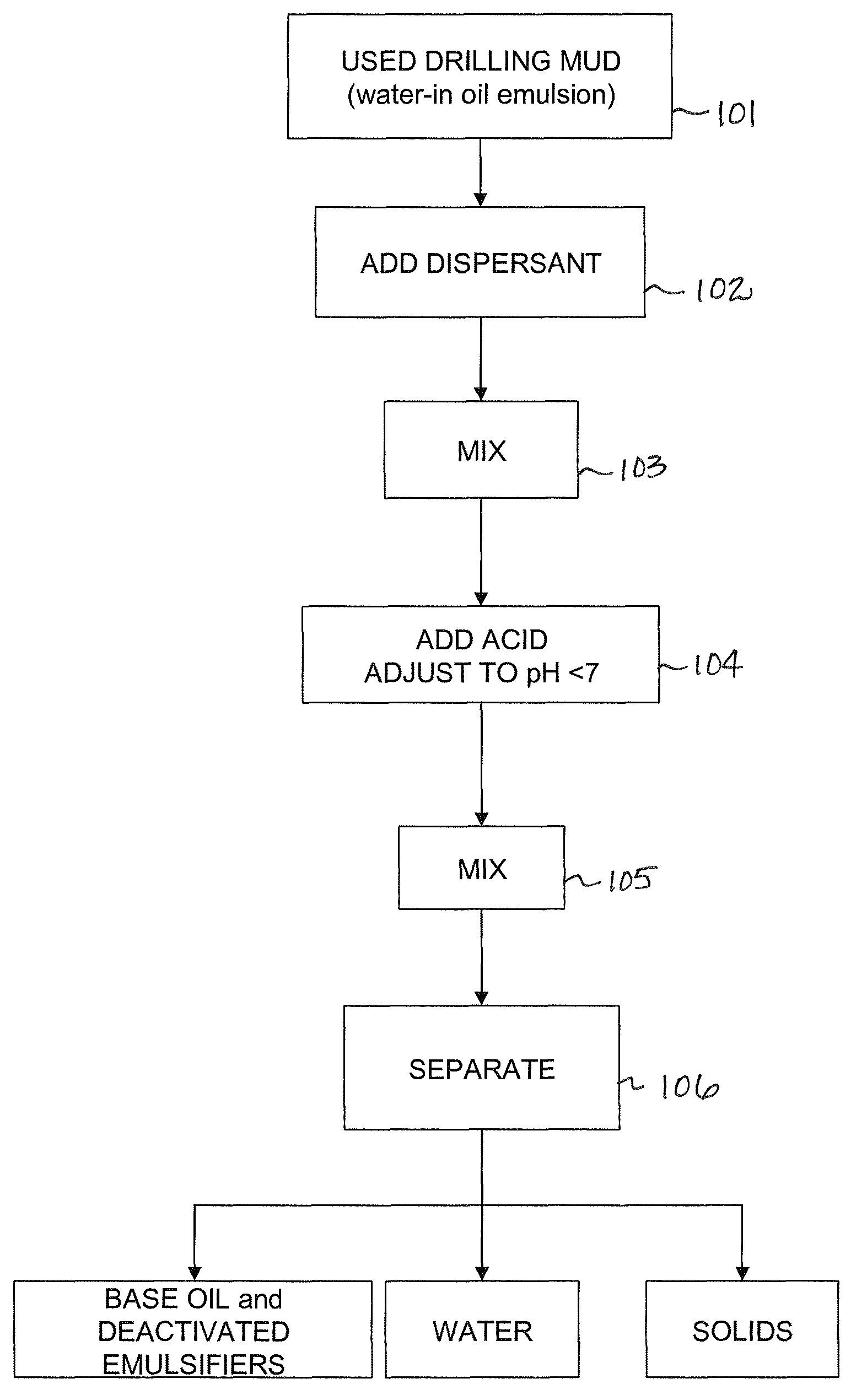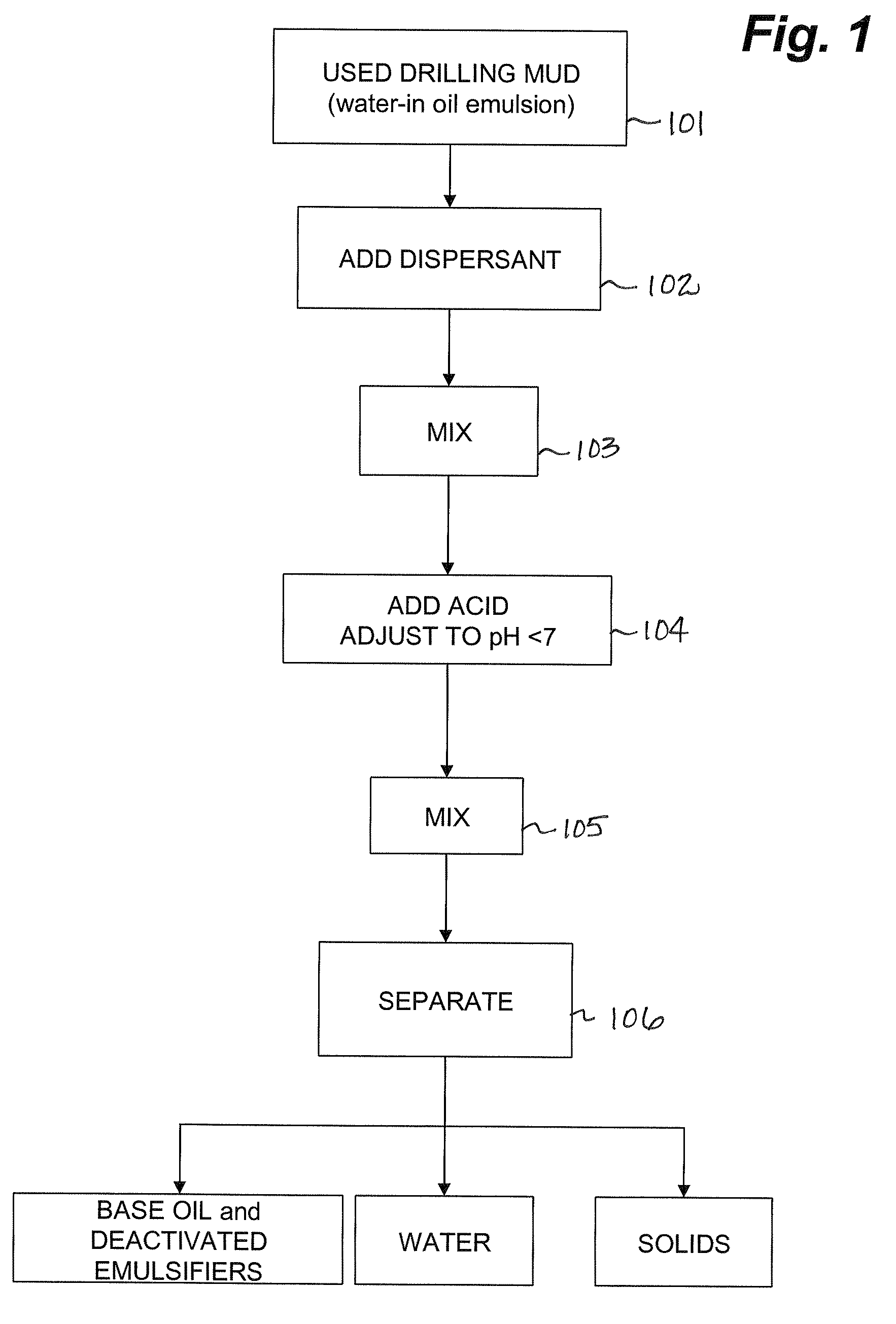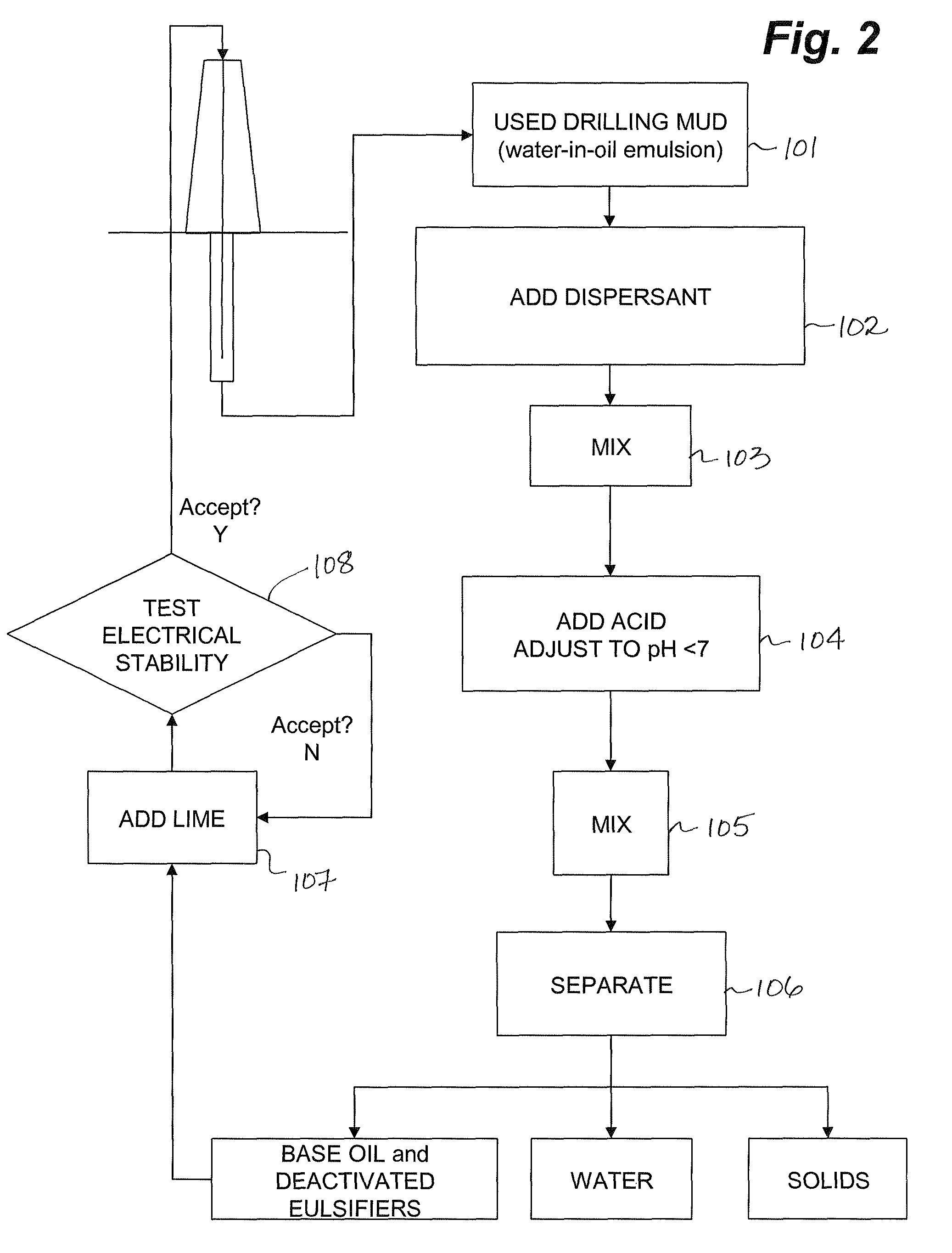Recycling of oil-based drilling muds
a technology of oil-based drilling mud and oil-based mud, which is applied in the direction of dewatering/demulsification with chemical means, separation processes, and borehole/well accessories, etc., can solve the problems of complex and variable properties of drilling mud formulations, high cost, and high cost of formulation
- Summary
- Abstract
- Description
- Claims
- Application Information
AI Technical Summary
Benefits of technology
Problems solved by technology
Method used
Image
Examples
example 1
[0052]The effectiveness of neutralization of the emulsifiers was tested using an embodiment of the invention to water wet the solids and remove the solids from the oil phase. Following treatment with an embodiment of the invention, a portion of the treated sample was centrifuged to remove the solids and a variety of individual tests were performed. As shown in Table 1, 11 samples are shown. Samples 10 and 11 are included to show that increasing acid volume did not further affect the density of the recovered oil.
[0053]Each 250 mL sample of solids-containing drilling fluid was added to a beaker and placed on to a paddle mixer at 200 rpm.
[0054]The properties of the drilling fluid samples prior to testing were as follows:[0055]1. Density: 1000 kg / m3 [0056]2. Oil / Water Ratio (OWR): 90 / 10[0057]3. Drilled Solids Concentration: 6% v / v[0058]4. Plastic Viscosity: 18 m.Pa.s[0059]5. Yield Point: 2.5 Pa[0060]6. Electrical Stability: 910
[0061]Sample 1 was not subjected to treatment according to e...
example 2
[0068]Samples of solids contaminated drilling fluid were treated according to embodiments of the invention using different v / v % DDBSA to illustrate that DDBSA, a known demulsifier and dispersant, acts as an exceptional surfactant to reduce the viscosity, especially the PV, as described herein and which aids in removing the solids. The same treatment method was used as in Example 1 and the results are shown below in Table 2.
[0069]
TABLE 2%Mix% v / vConcn% v / v% v / v#TimeHClHClNE005DDBSAPVYPESρoil10————151.59000.950216402000485.51700.925316402010474.51500.920440202011173400.855516402012192.5550.859
[0070]One skilled in the art can see in samples 4 and 5, that DDBSA aids in dispersing the organoclay and drilled solids as shown by the lower plastic viscosity (PV) and also aids in reducing the emulsion strength as shown by the lower electrical stability (ES).
[0071]The resulting recovered base oil has a lower density, approaching an ideal density, being that of the virgin base oil used in a dr...
example 3
[0072]Testing was conducted to illustrate the effect of different mixing times. The same test procedure was used as in Example 1 however the drilling fluid samples were obtained from a different wellbore. The drilling fluid had the following properties:[0073]1. Density: 1100 kg / m3 [0074]2. Oil / Water Ratio (OWR): 91 / 9[0075]3. Drilled Solids Concentration: 7% v / v[0076]4. Plastic Viscosity: 22 m.Pa.s[0077]5. Yield Point: 4.5 Pa[0078]6. Electrical Stability: 1260
[0079]
TABLE 3%Mix% v / vConcn% v / v% v / v#TimeHClHClNE005DDBSAPVYPESρoil1240251147131050.8652440200042111050.867364020103891000.865416 2020113371000.8655—————224.512600.920
[0080]It was noted that the electrical stability was higher than in the drilling fluid used in Example 1 which is an indication that there was more emulsifier present in the drilling fluid used in this example. A higher concentration of acid was therefore required for neutralization of the increased amount of emulsifier.
[0081]One skilled in the art can see that mi...
PUM
| Property | Measurement | Unit |
|---|---|---|
| volume % | aaaaa | aaaaa |
| volume % | aaaaa | aaaaa |
| size | aaaaa | aaaaa |
Abstract
Description
Claims
Application Information
 Login to View More
Login to View More - R&D
- Intellectual Property
- Life Sciences
- Materials
- Tech Scout
- Unparalleled Data Quality
- Higher Quality Content
- 60% Fewer Hallucinations
Browse by: Latest US Patents, China's latest patents, Technical Efficacy Thesaurus, Application Domain, Technology Topic, Popular Technical Reports.
© 2025 PatSnap. All rights reserved.Legal|Privacy policy|Modern Slavery Act Transparency Statement|Sitemap|About US| Contact US: help@patsnap.com



